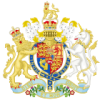Limehouse District
The Limehouse District is a district in east London. It was an extensive port in the late Medieval period and shipbuilding center in the sixteenth century. The district gets its name from the fourteenth-century lime oasts, which were large kilns that converted chalk from Kent into quicklime for building projects in the city. The Limehouse District is also the location for the first case of cholera in England (1832).
Coordinates
Latitude: 51.512645891346
Longitude: -0.024422406277
Longitude: -0.024422406277


